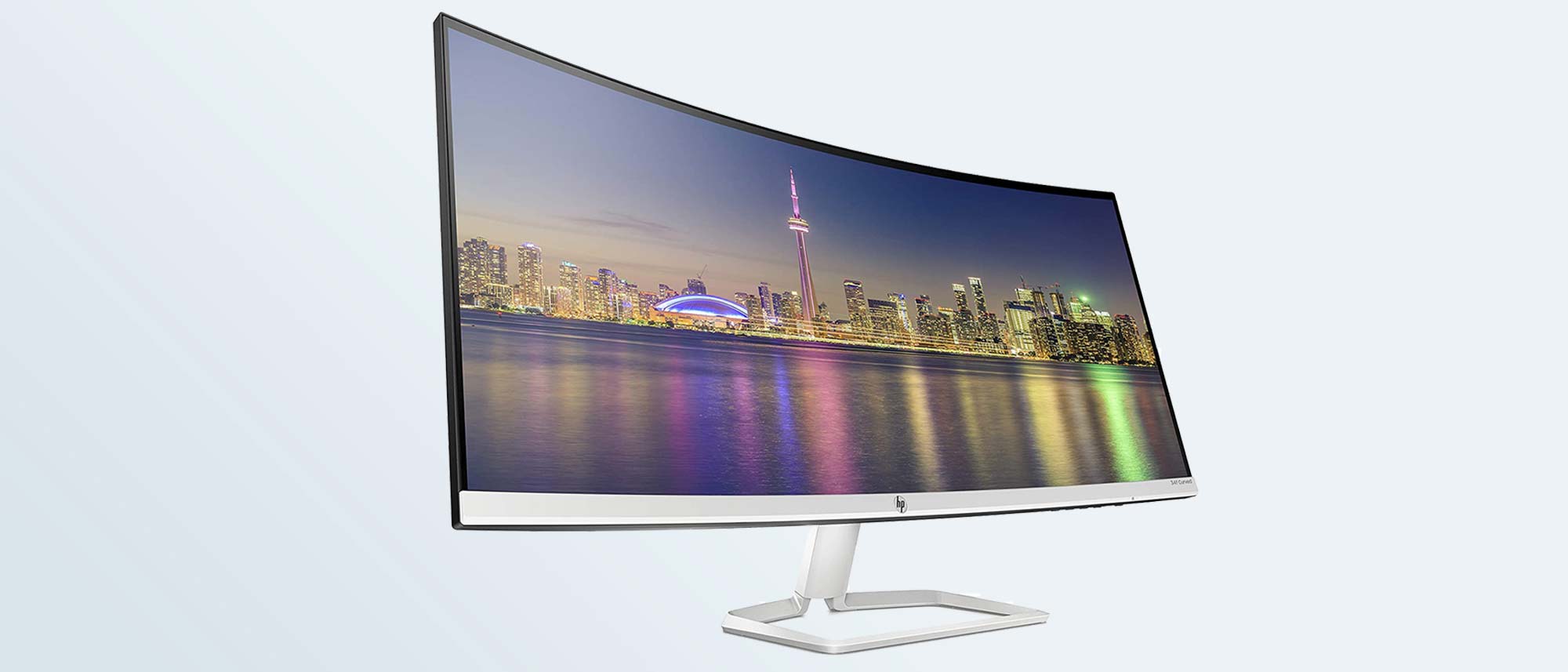Tom's Guide Verdict
The HP 34f curved display is a great example of premium professional and gaming features trickling down to more mainstream models, as the general purpose 34f boasts excellent color and brightness, adaptive sync capability and a swoon-worthy design.
Pros
- +
Ultra-wide, curved screen
- +
AMD FreeSync
- +
Ergonomic adjustments
Cons
- -
No speakers
- -
No HDR support
- -
No Nvidia G-Sync support
Why you can trust Tom's Guide
The HP 34f curved display combines an excellent ultrawide panel, better-than-full HD resolution and excellent performance with a mainstream price and feature set that will satisfy even picky shoppers. The spacious 21:9 display can replace a dual-monitor setup, or extend your single monitor for even better productivity, and the feature set lends itself well to more demanding uses, like photo editing or some gaming (albeit limited to 60Hz).
It's not a perfect display, missing HDR support and lacking any sort of built-in audio. But as you’ll see in our HP 34f Curved Display review, this monitor manages to offer great overall quality and a premium feel for a price that's far more mainstream than you might expect at first glance.
HP 34f Curved Display design
The HP34f has two standout design elements that you'll notice the moment you look at it. First this is an ultra widescreen display, that stretches 34 inches from corner to corner with a 21:9 aspect ratio. In practical terms, that means one monitor that's wide enough to provide an experience similar to a dual-monitor setup.
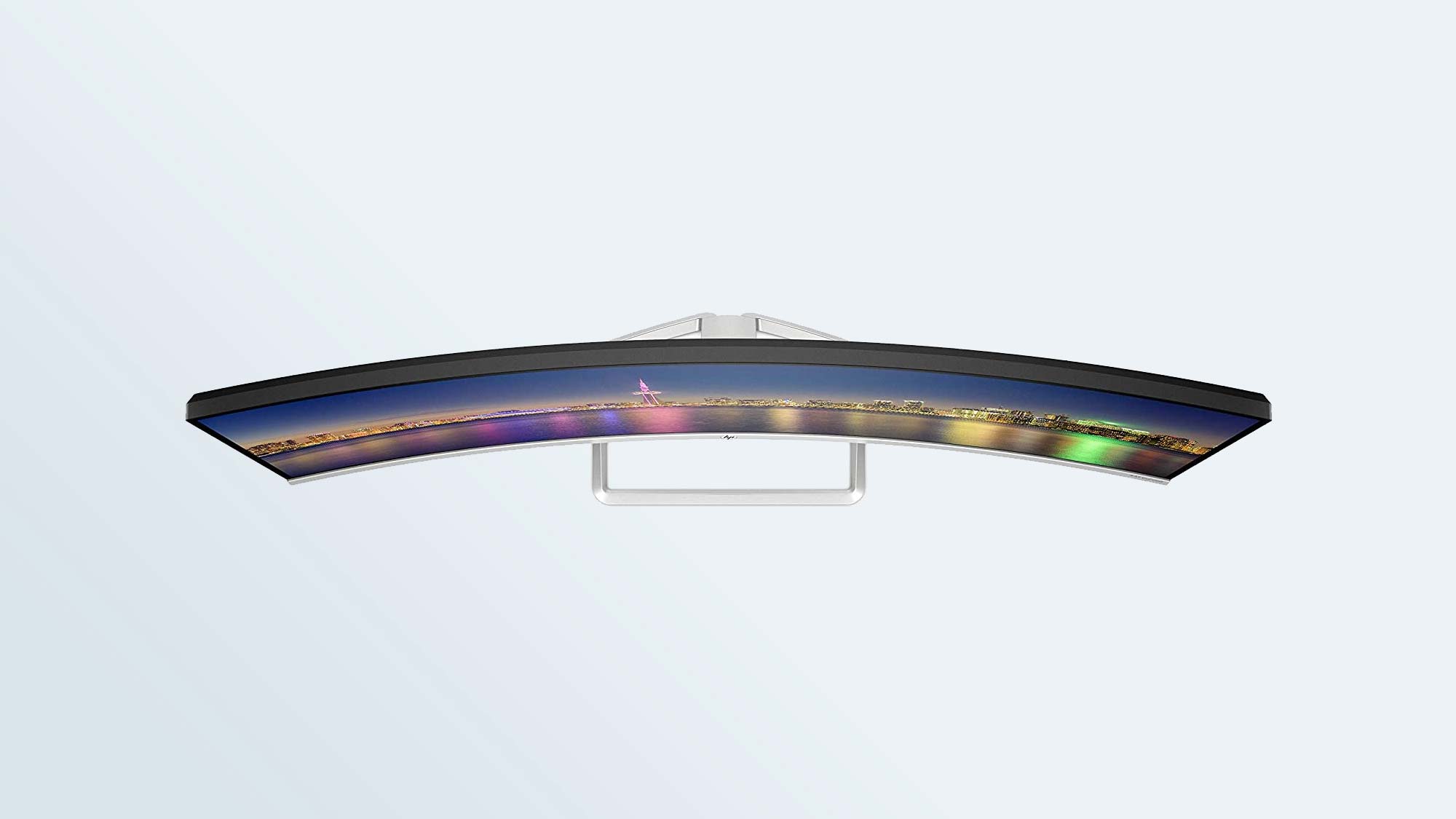
The other significant feature is the gentle curve of the display. The HP 34f offers excellent viewing angles for every inch of the screen, even out at the furthest edges, making it great for both work and play. That gentle curve means that you will always be able to clearly see details anywhere on the screen, such as a giant data filled spreadsheet. And in gaming it makes for a more immersive experience that extends out into your peripheral vision.
The attached stand has an open footprint, where the base has a square frame instead of a flat plate supporting the stand and monitor. That small design choice manages to make the 34f feel less cluttered on the desk, and provides a space for keeping some of the odd and ends that inevitably find their home around your keyboard and monitor.
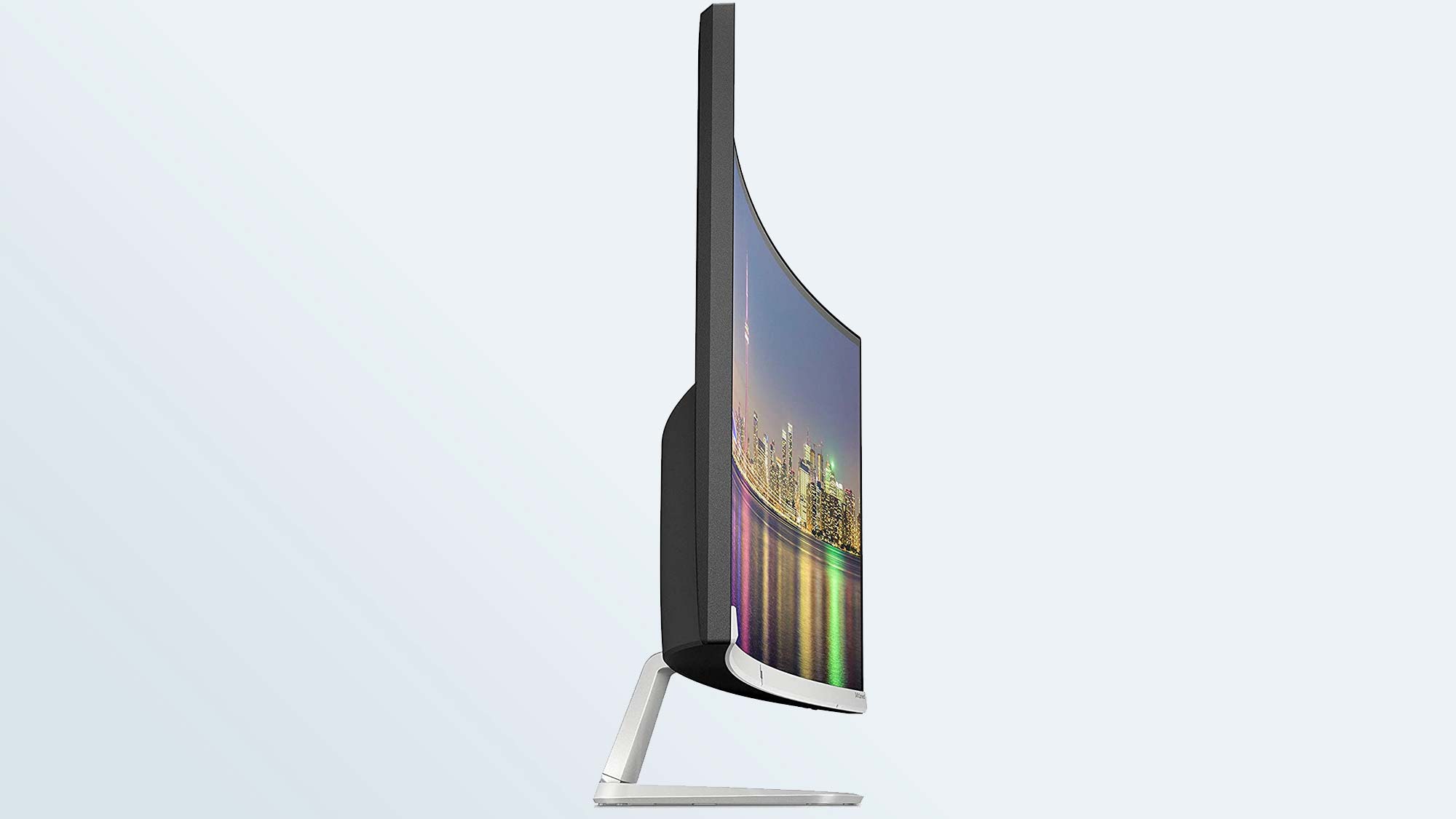
The stand provides angle adjustment – tilting back 25 degrees and forward 5 – but no height adjustment or rotation between landscape and portrait modes. And thanks to the borderless design (the only real bezel on this monitor is a narrow chin that runs along the bottom of the display), there's no ugly black box around the display panel.
HP 34f Curved Display ports and interface
The 34f is controlled by five physical buttons on the underside of the bottom bezel. One is a power button with an easy to see indicator LED that lets you know when you've turned the monitor on or off. The additional four buttons let you open the control menu, adjust the brightness, change the color and switch inputs.
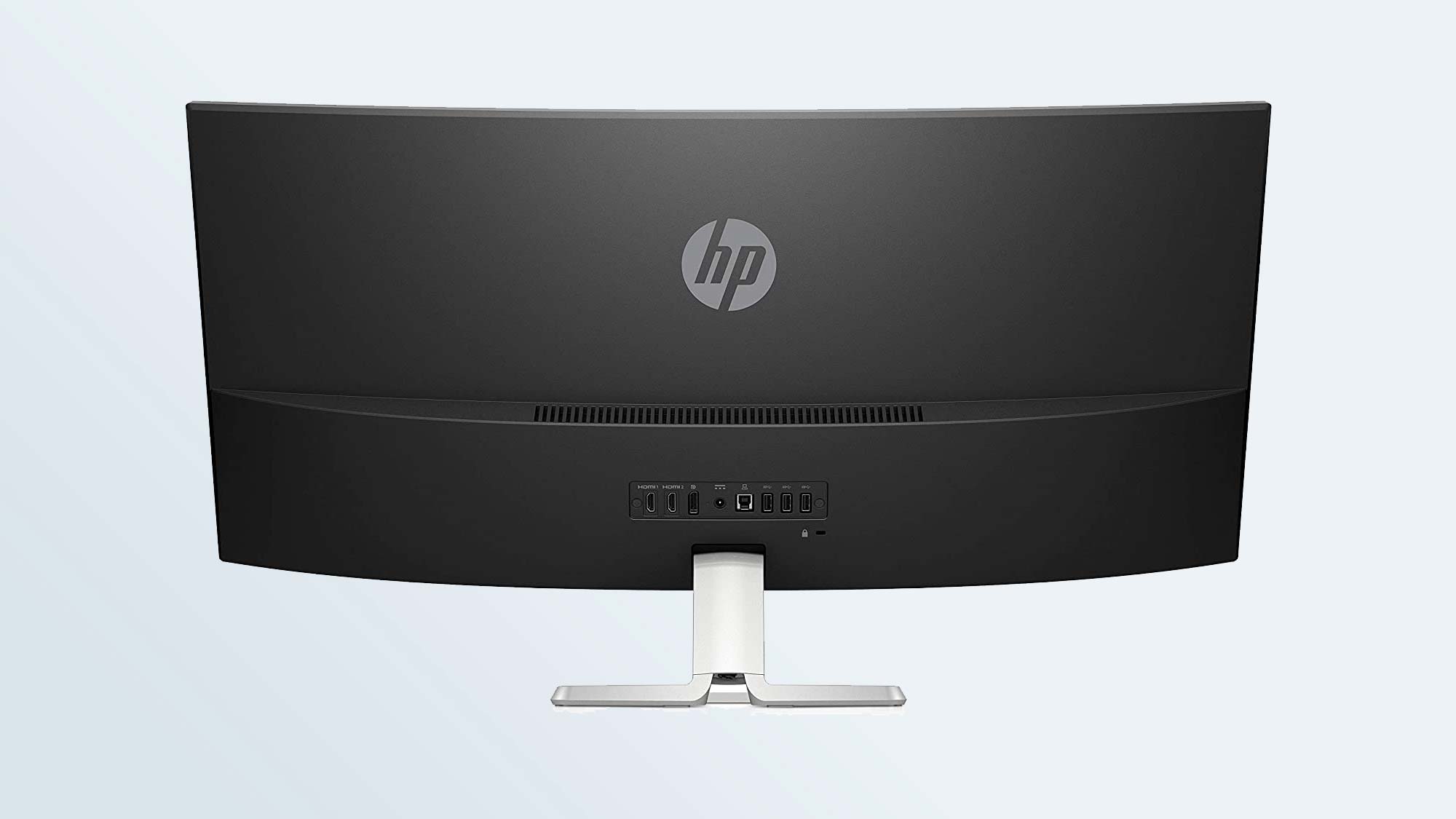
The control menu offers a number of display adjustments, including brightness, contrast, color control, input switching, image control (which includes dynamic contrast and FreeSync settings), as well as power settings, menu options, and display language settings.
What you won't find, however, are some of the more granular controls that you would expect on something like a gaming monitor. There are no genre-specific presets, no options for on screen crosshairs, or similar features. The monitor does, however, offer the ability to toggle AMD's FreeSync on and off, and adjust the contrast levels to better handle blacks and shadowy hues.
HP 34f Curved Display performance
With a WQHD (3440 x 1440) resolution display and good brightness and clarity, the 34f made just about everything look great. Watching the trailer to Christopher Nolan's Tenet, I was impressed with how well the display handled the subtle color palette, making everything look lifelike, from varied skin tones to the fine cloth of tailored suits and the slow motion destruction of car crashes in reverse.
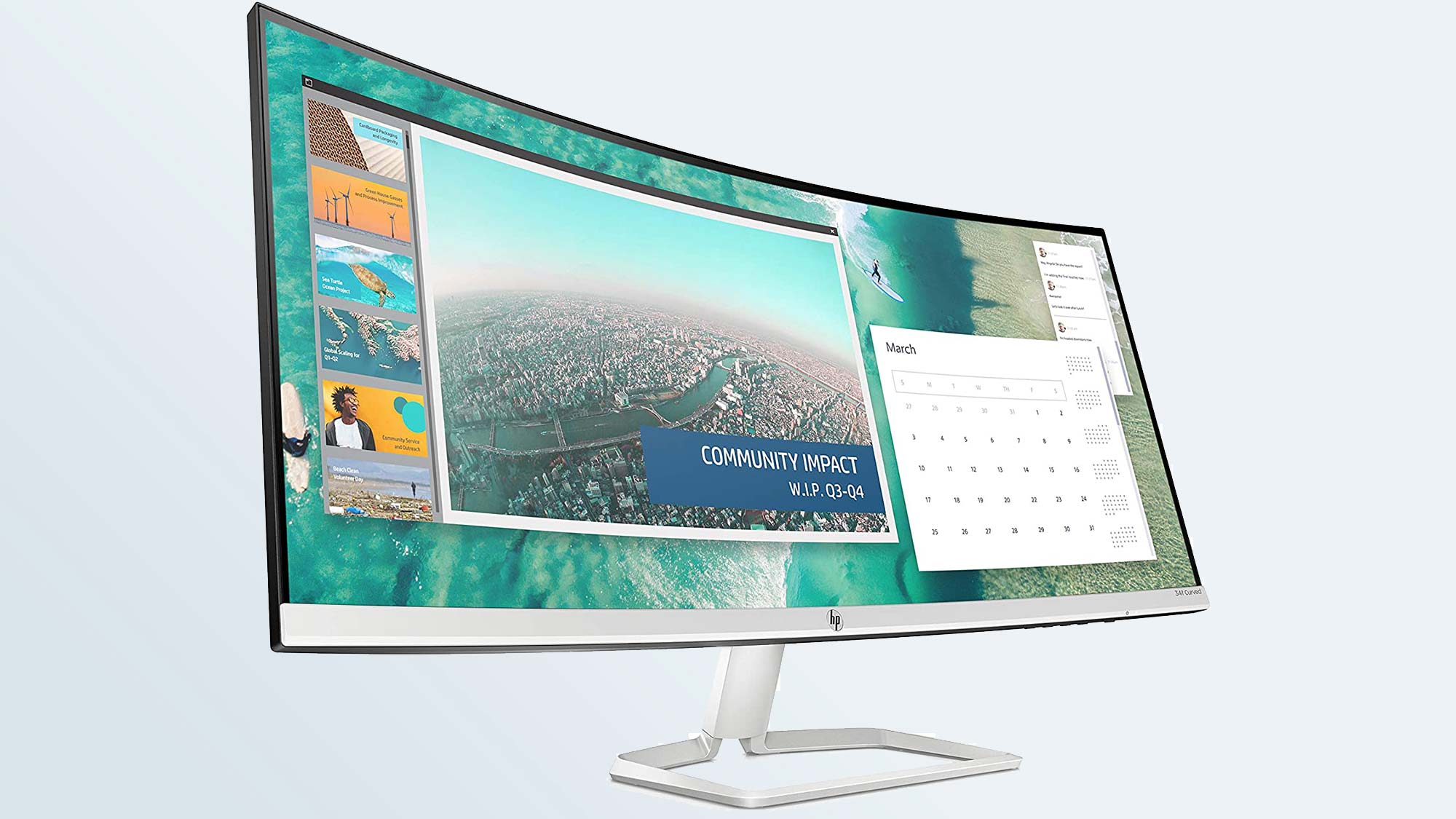
With AMD FreeSync you'll enjoy judder-free gaming, provided you have an AMD graphics card. Using the Nvidia GTX 1080 card in our test PC, I experienced some pretty dramatic screen tearing.
When playing Hitman 2, the display offered bright colors and subdued tones, depending upon the level. When I was in the sundrenched city of Sapienza, the ocean was brilliant blue, the grass was verdant green, and explosions were bright orange and yellow.
Playing a less demanding game, like the cartoony Borderlands 2, I enjoyed vivid colors and fast-paced action as I palled around with a cantankerous robot and battled snow monsters and a range of ruffians. But with my Nvidia graphics card – which isn't compatible with the monitor's AMD FreeSync – I experienced frequent screen tearing.
HP 34f Curved Display lab test results
The HP 34f curved monitor is a great example of the technology seen in pricey professional displays and gaming monitors coming down to more general use products. While the 34f's price does put it on the pricier end of the general use spectrum, it's definitely not made to compete with monitors like the Acer PEO Series ProDesigner PE320QK, which is made for designers and visual professionals, or the LG 38GL950G UltraGear, which is a high-end gaming display.
Nonetheless, as a curved monitor boasting decent resolution, 60Hz refresh rates and AMD FreeSync, the comparison is still a valid one. In fact, in our lab testing, the HP 34f performed admirably, even when stacked against these more expensive, and supposedly higher-caliber monitors.
The brightness is excellent, measuring an average of 296.8 nits according to our Klein K-10A colorimeter. That's better than both the Acer Predator X34 (261 nits) and the Acer PEO Series ProDesigner PE320QK (237 nits). But the LG 38GL950G UltraGear offers much higher brightness (544.4 nits) along with HDR support – which the HP 34f doesn't offer.
The 34f also covers well above 100% of the sRGB color gamut. (Don't be confused by numbers of higher than 100%, that simply means that it offers more color support than the sRGB color space calls for.) In our testing, the HP 34f reproduced 115.6% of the sRGB space, better than both the Acer Predator X34 (98.9%) and the Acer PE320QK (108.7%), but falling behind the gamer-oriented LG 38GL950G UltraGear (148.9%).
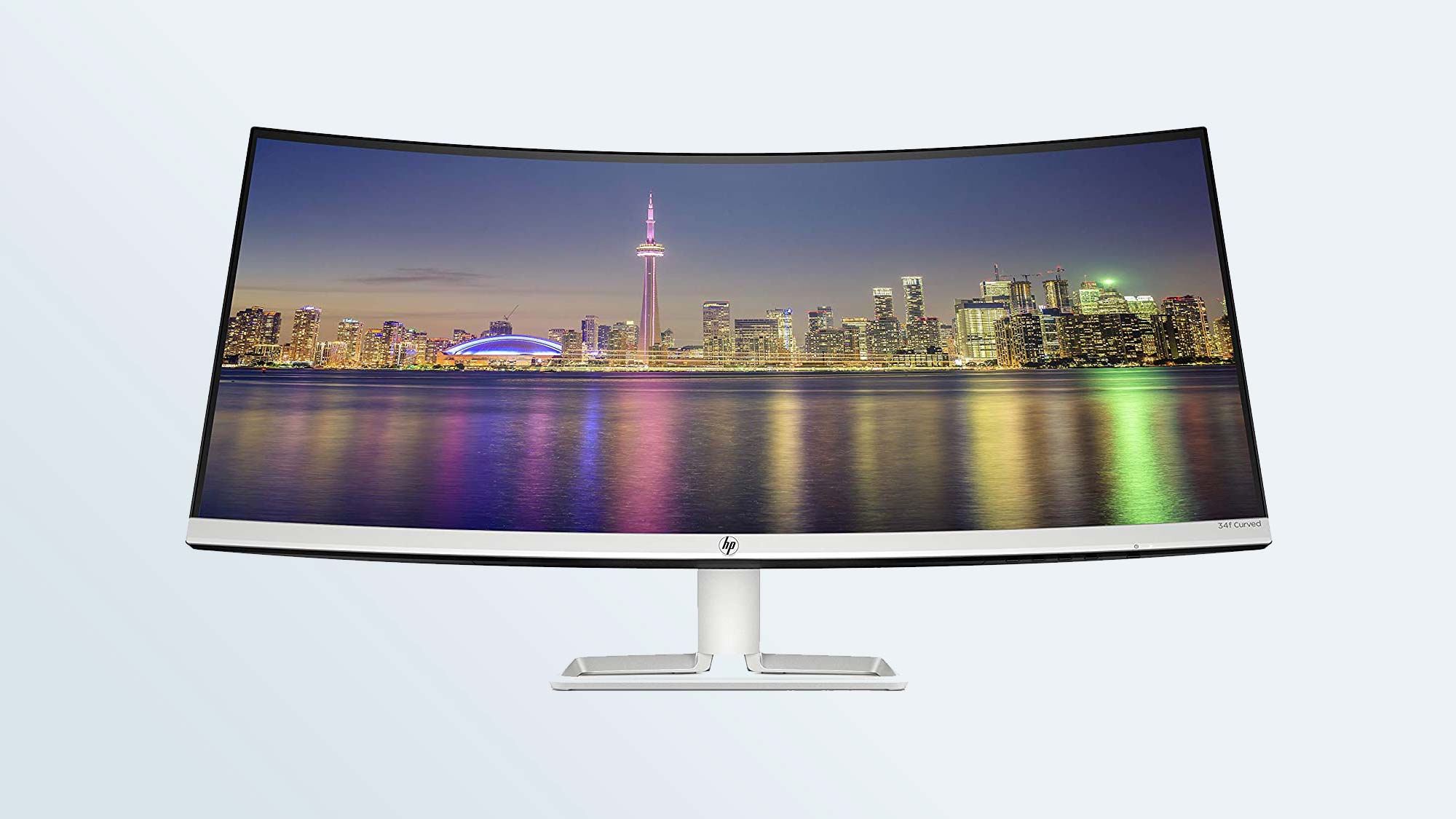
Color accuracy was also great, with a delta-E rating of 0.07. With 0 being a perfect score, this indicates almost no deviation from flawless color. While any rating under 0.2 is excellent, this still edges ahead of competing monitors, like the LG 38GL950G UltraGear (0.24) and even the superb Acer PE320QK (0.09) which comes factory calibrated and is designed for color-critical professional use. By comparison, the generally great Acer Predator X34 (1.77) looks downright inaccurate, despite offering better-than-average color accuracy itself.
Lastly, we measured the HP 34f's lag time, measuring the interval between a signal sent and its appearance onscreen. The HP managed a decent 10.3 milliseconds. That's slower than the Acer Predator X34 (9.7 ms), but quicker than another gaming monitor, the Alienware AW3418DW (12.9ms). While gaming isn't the primary focus of the HP 34f, it's definitely no slouch if you want to occasionally try out the latest titles.
HP 34f Curved Display: Verdict
Between the excellent performance and solid feature set, the HP 34f curved display is a pretty good option for anyone that wants a wider screen, a more immersive viewing experience, and a monitor that can handle everything from homework assignments to the latest games.
As an ultrawide 34-inch monitor with a curved design and WQHD resolution, the HP 34f curved display is most notable for what it doesn't have: a premium price. It wasn't long ago that curved panels were relegated to gaming monitors like the Acer Predator X34 and the LG 38GL950G UltraGear, offering more immersive gaming, but charging an arm and a leg to do it. When so many curved monitors sell for much more, the HP 34f's reasonable sub-$500 price is a breath of fresh air.
Brian Westover is currently Lead Analyst, PCs and Hardware at PCMag. Until recently, however, he was Senior Editor at Tom's Guide, where he led the site's TV coverage for several years, reviewing scores of sets and writing about everything from 8K to HDR to HDMI 2.1. He also put his computing knowledge to good use by reviewing many PCs and Mac devices, and also led our router and home networking coverage. Prior to joining Tom's Guide, he wrote for TopTenReviews and PCMag.
